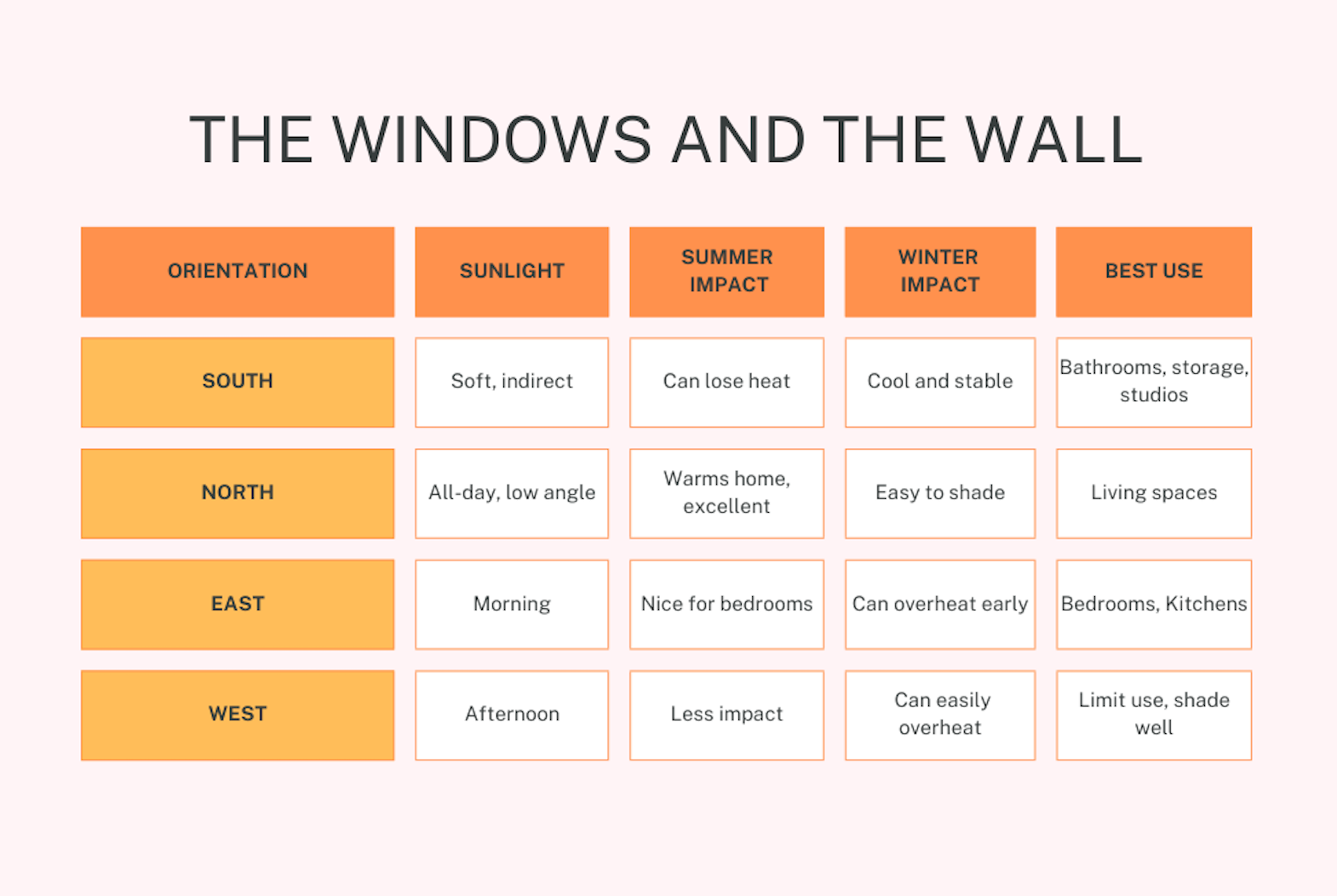Get Low
It’s made me scream on several occasions - a ripening hot day in the summer so hot that clothes and even the heat of my own limbs become irritating - to then walk into my house, which baked into an oven throughout the day. “The Winterless North” in subtropical New Zealand is a selling point for most people who live here. They never warn you about the “Sample of Hell’s Heat Summer”. My frugality refuses to have me leave on air conditioning. My sensibility restricts me from leaving the windows and doors open while I’m at work.
On the other side of the world, in the Rocky Mountains, my mother brags about her non-existent power bill, even through the freezing winters. She hasn’t installed solar panels and she isn’t living in a mud house - how does she do it?
She designed her house with the sun in mind. This concept is known as passive solar, using the sun’s natural energy to heat, cool, and light buildings without mechanical systems. It’s efficient, cost-effective, and sustainable.
Living in the northern hemisphere, the sun’s path will travel on the southern side of the house. In the winter, the sun hangs low, and stretches higher in the sky in the long summer months. To maximise the winter sun coming in, my mom designed her house with plenty of windows on the southside of her house, with awnings above the windows to shade against the high summer sun.
It’s not just window placement that keeps the bills low.The rays beam into the heart of the house, warming up dark tiles. In the afternoon, the tiles are warm to the touch. By night, they slowly radiate heat into the house. These tiles are an example of using thermal mass - a material’s ability to absorb and store heat (Ministry).
Keeping the heat locked inside is the next dilemma. Sealing your home is one of the simplest ways to gain more control of the temperature within. Breezes flowing under doors or between window cracks let the cold creep in. A house can lose up to 40% of its heat through windows and doors (YourHome), which can be prevented by sealing the openings. I bought window seals at my local dollar shop. Structurally, insulation and double glazed windows creates a barrier to heat flow - keeping the inside of your house a certain temperature despite the fluctuating temperature outside.
But what about those of us dripping with sweat in the summer instead of freezing our asses off?
These methods are all hunky-dory in the deep winters of the Rocky Mountains, but they seem irrelevant in the sweltering summers down under. The last thing I want to do is keep the heat locked in my house, but rather to prevent heat from coming in and let go of the heat it gains.
My first simple solution is shading and being aware of the colors used in my house. During the day, I keep my white curtains drawn to best reflect the sunrays. Shade can also be provided by eaves, awnings, shutters and plantings around the house.
Instead of sealing in the heat, I do the opposite - I let it go.Open windows create breeze paths throughout the house. However, the wind is lazy and seeks out the shortest path in and out of the house. To maximise the air flow in any given room, the windows should be staggered, rather than directly across from each other, encouraging the breeze to pass through the whole room before escaping. Staggering windows by their height on the walls keeps cooler air flowing in. Hot air rises, so as the air warms up in the house, it will naturally drift upwards towards the ceiling. As hot air leaves through a high window, it creates a vacuum below, sucking in the cooler air closer to the ground.
There are many innovative ways to mitigate the temperature of your home. Having ponds, pools, running water, or greenroofs help keep a building cool (Koukos). Using clay or timber as building materials combat humidity while indoor plants and green walls add humidity, improve air quality, and dampen noise. Skylights provide natural light. Well designed roofs work with wind patterns to promote air flow.
By being aware of the power of the elements when we build infrastructure, we will see lower energy bills, more comfortable year round temperatures, less maintenance, and environmentally friendly solutions. When we work with nature, we don’t have to work as hard, and it certainly costs a lot less.
Resources for you
Besides north and south, whether windows are on the east or west side impact the temperature regulation. Below is a table summarising window placement impact on households in the Southern hemisphere.
Find the sun path of your home: https://www.suncalc.org/#/-36.0389,174.1139,7/2025.04.06/17:58/1/3
Resources I used
Koukos, J. [@josephkoukos]. (2020, May 13). Passive solar design simplified [Video]. YouTube. https://www.youtube.com/watch?v=M6F9u8NjojY
Ministry of Business, Innovation and Employment. (2023, August 9). Using thermal mass for heating and cooling. Building Performance. Retrieved April 6, 2025, from https://www.building.govt.nz/getting-started/smarter-homes-guides/design/using-thermal-mass-for-heating-and-cooling
YourHome. (n.d.). Passive design. Australian Government. Retrieved April 6, 2025, from https://www.yourhome.gov.au/passive-design
